Custom alerts and data visualization let you quickly identify and prevent network latency and other network performance issues.
Many companies use VoIP (Voice over Internet Protocol). However, one single delayed data packet can lead to transmission errors and disruptions that are noticeable at once: Jitter can cause the call quality or video quality to go down or fill the line with static. With Paessler PRTG, you’ll keep a constant eye on jitter values to make sure this doesn’t happen.
In companies that use VoIP, employees can’t work efficiently unless the network is stable. Make sure your coworkers are able to do their jobs without interruption with PRTG.
If fluctuations in jitter values occur, you can quickly intervene to eliminate them. Our network monitoring tool also enables you to monitor other parameters that affect your network’s quality of service (QoS).
PRTG stands out from other latency and jitter monitoring tools – its alerting system is completely customizable. It immediately notifies you in the event of a problem via SMS, email, push notification, and more, so you can react quickly and before noticeable outages occur.
Thanks to PRTG, you’ll lift a huge weight off the shoulders of your support team, as fewer coworkers will have incidents to report.
Diagnose network issues by continuously tracking jitter levels in your network. Show statistical jitter, MOS, round-trip time (RTT), and other key metrics in real time. Visualize monitoring data in clear graphs and dashboards to identify problems more easily. Gain the overview you need to troubleshoot network congestion and jitter issues.
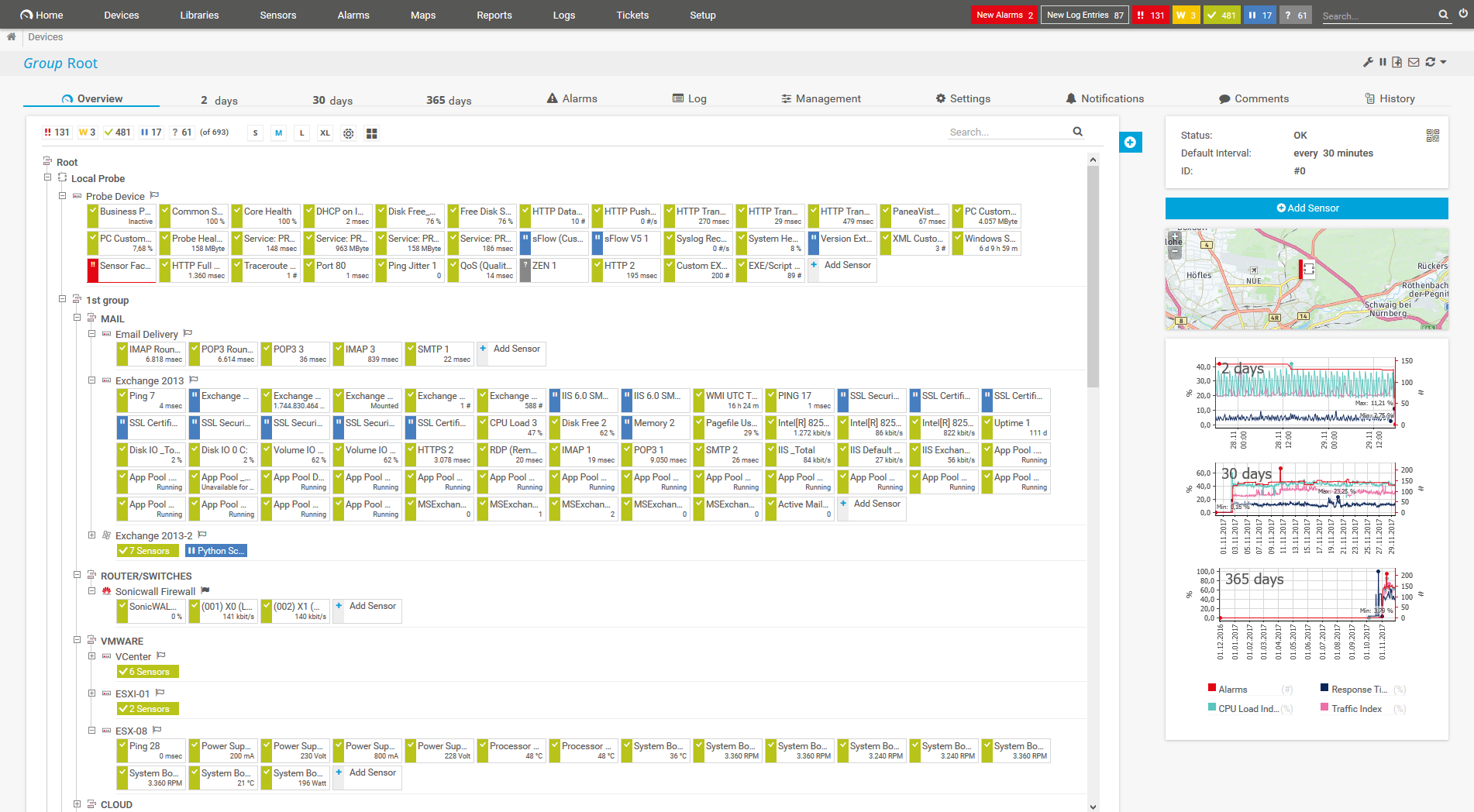
Device tree view of the complete monitoring setup
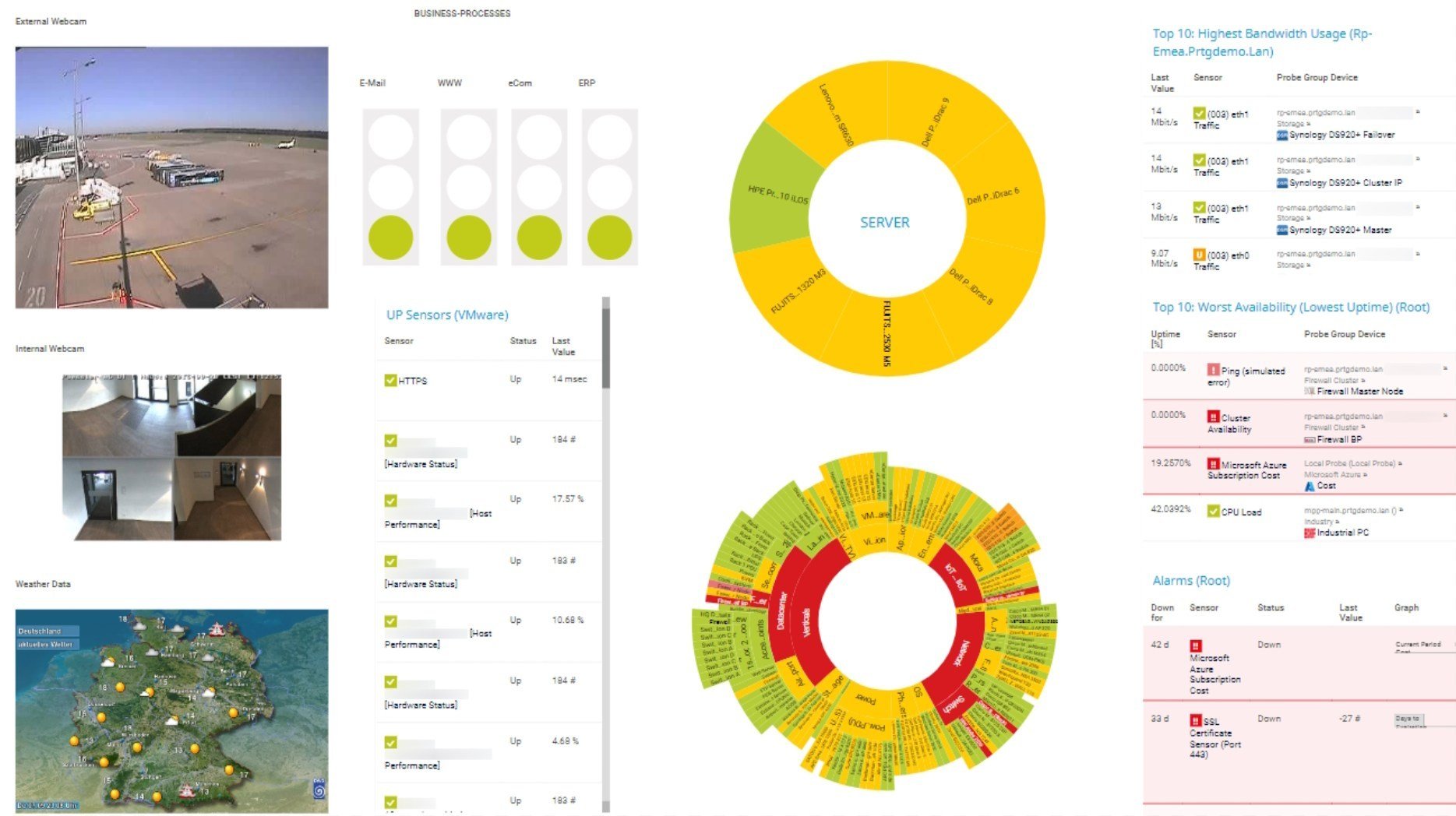
Custom PRTG dashboard for keeping an eye on the entire IT infrastructure
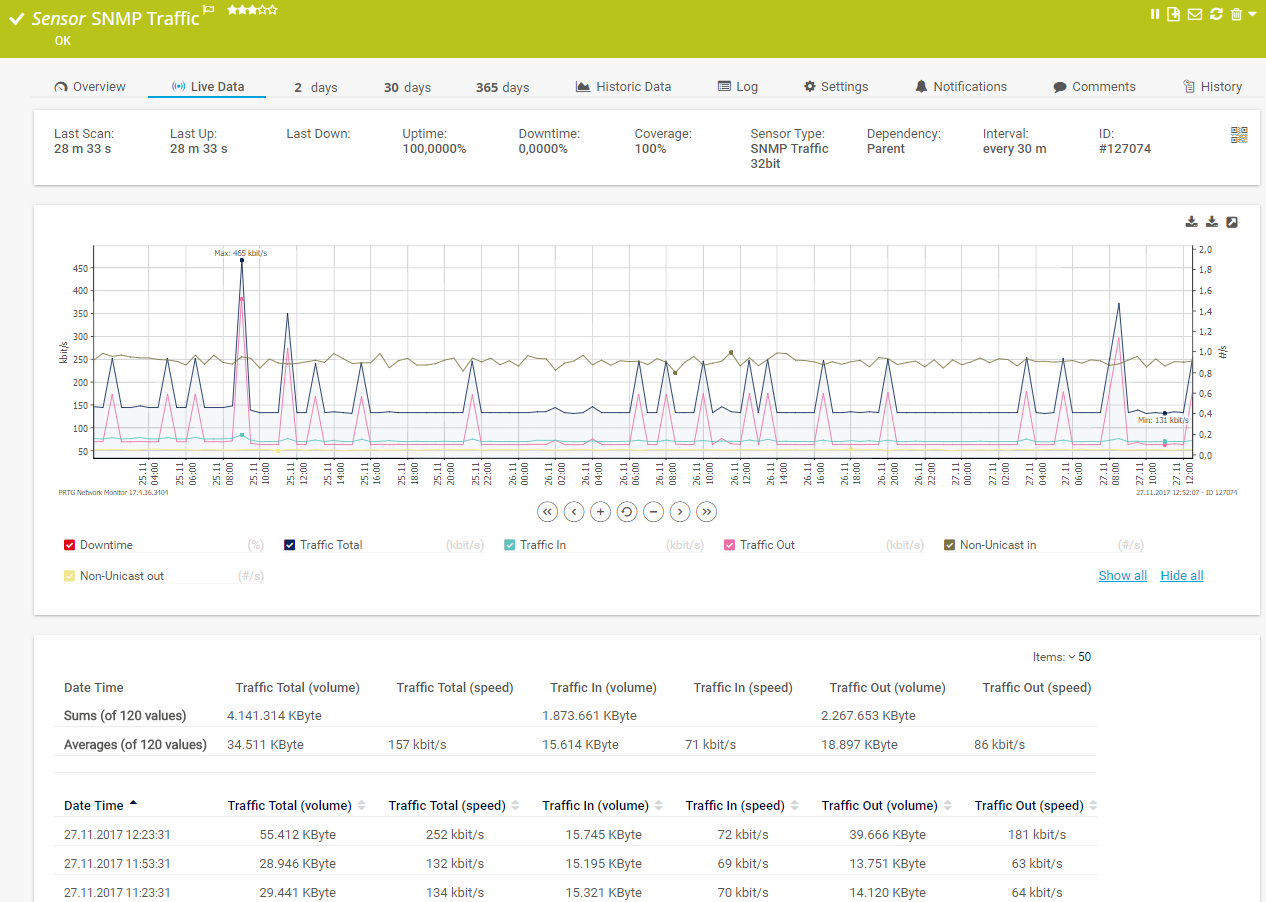
Live traffic data graph in PRTG
PRTG comes with 100 free sensors that never expire, so you can run free network jitter tests.
Start by creating a preconfigured jitter monitoring sensor. You don’t have to run a trial first and you can read the jitter value directly from your network.
Only PRTG’s continuous and automated jitter monitoring including its easy-to read graphs and clear dashboards can determine what is causing your jitter values to fluctuate.
Other individual jitter tests won't tell you much because they only check jitter for a specific point in time.
PRTG complies with the standards of the RTCP for measuring jitter (RFC 1889). Jitter is measured in milliseconds (ms) and displayed directly in the PRTG sensor.
Methods for measuring jitter include mean packet delay variation and mean absolute packet delay variation.
PRTG comes with more than 250 native sensor types for monitoring your entire on-premises, cloud, and hybrid cloud environment out of the box. Check out some examples below!
See the PRTG Manual for a list of all available sensor types.
Real-time notifications mean faster troubleshooting so that you can act before more serious issues occur.
How much time does a data packet need for its "trip” from the sender to the receiver? This time is referred to as latency. According to ITU-T, the agency responsible for telecommunications standards, latencies of up to 125 milliseconds are acceptable.
PRTG’s recommendation: Set a threshold of 100 milliseconds. You’ll immediately receive an alert if this value is exceeded, allowing you to act quickly before noticeable interruptions or crashes arise.
The mean opinion score is used to express the quality of a call. VoIP transmission. It is the arithmetical average of several parameters. The lowest MOS is 1, while the highest MOS is 5.
This score is based on jitter, latency, and other parameters. As a compilation of values, MOS offers a quick overview of the status of your VoIP.
Jitter measures the variation in a mean latency value. We recommend that this deviation be less than 20 to 25 milliseconds, even if this amount is somewhat lower than what is usually considered acceptable.
What’s important is that you become aware of jitter as quickly as possible so you can take action at once. It also depends on your expectations: for some, jitter and delays of any kind are unacceptable.
Individual packets are often responsible for problems with VoIP. Packets can get lost, become corrupted, or arrive as duplicates or in the wrong order.
PRTG lets you identify each of these scenarios. We recommend setting your packet loss rate threshold at 0% so that just one lost packet will generate an error message or lead to a malfunction.
Custom alerts and data visualization let you quickly identify and prevent network latency and other network performance issues.
Set up PRTG in minutes and use it on almost any mobile device.
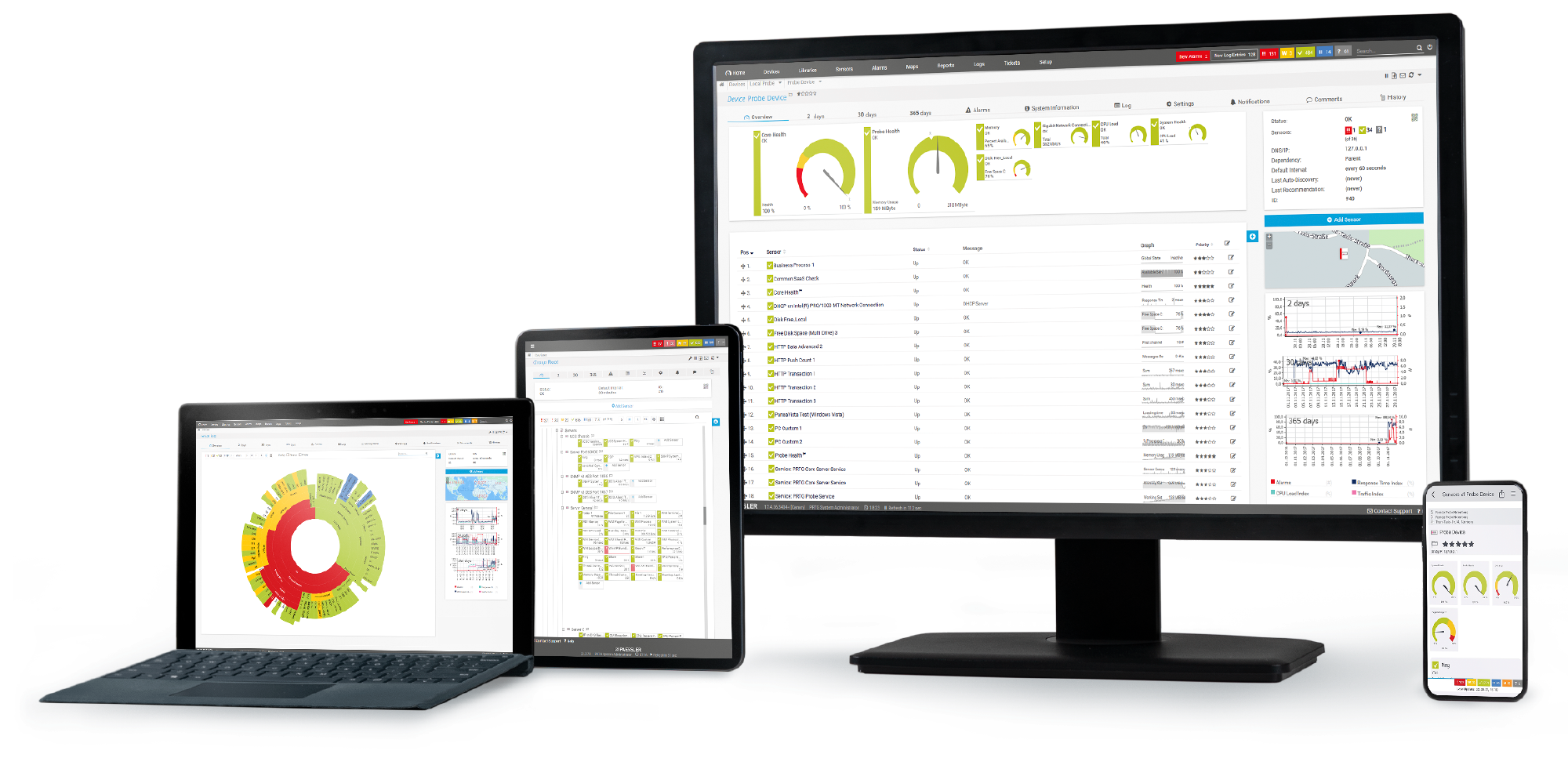
“Excellent tool for detailed monitoring. Alarms and notifications work greatly. Equipment addition is straight forward and server initial setup is very easy. ...feel safe to purchase it if you intend to monitor a large networking landscape.”
Partnering with innovative IT vendors, Paessler unleashes synergies to create
new and additional benefits for joined customers.
Integrating monitoring results from PRTG into NetBrain maps makes the foundation for network automation.

Paessler and Plixer provide a complete solution adding flow and metadata analysis to a powerful network monitoring tool.
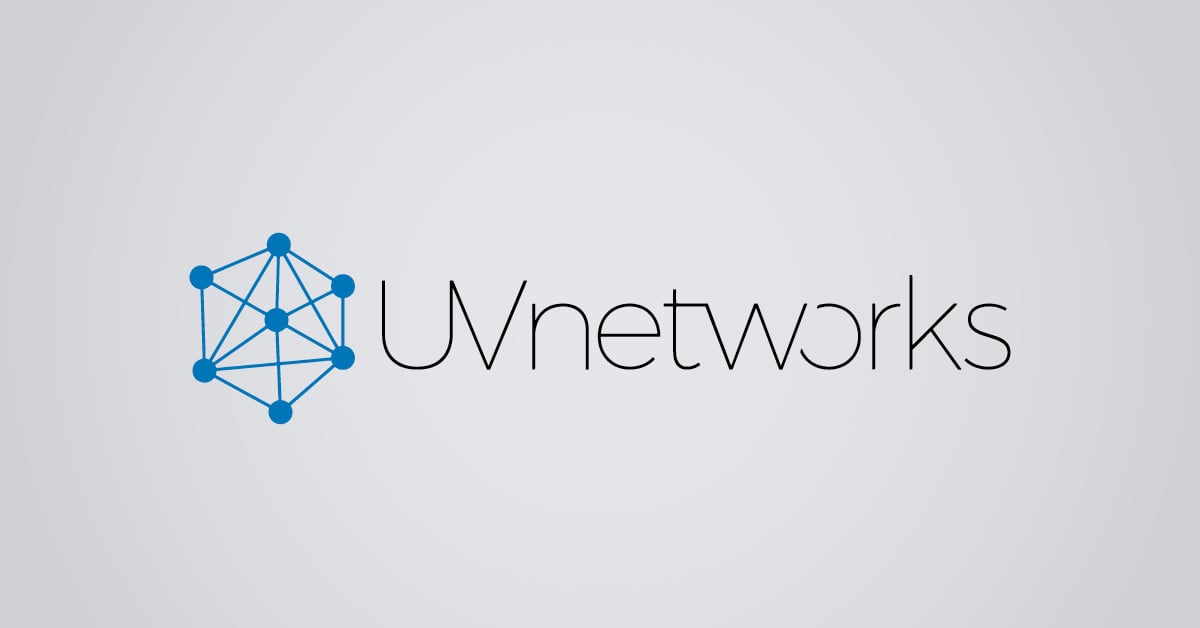
UVexplorer integrates tightly with PRTG to bring fast and accurate network discovery, detailed device inventory, and automatic network mapping to the PRTG platform.
Real-time notifications mean faster troubleshooting so that you can act before more serious issues occur.
Network Monitoring Software – Version 24.4.102.1351 (November 12th, 2024)
Download for Windows and cloud-based version PRTG Hosted Monitor available
English, German, Spanish, French, Portuguese, Dutch, Russian, Japanese, and Simplified Chinese
Network devices, bandwidth, servers, applications, virtual environments, remote systems, IoT, and more
Choose the PRTG Network Monitor subscription that's best for you
Data packets are transmitted at a certain speed. A sender sends packets to a receiver in millisecond intervals. Jitter occurs when this interval gets off track, leading to deviations or irregularities in runtime. The term "jitter” means fluctuation, oscillation, or a variation in frequency.
Jitter is calculated mathematically and in a standardized fashion. The IETF has outlined its jitter calculation method in RFC 3550. PRTG uses this protocol to calculate jitter.
If data packets reach a receiver at irregular intervals, then loopholes emerge. As a result, data can no longer be circulated on a continual basis. While this may not be a big deal for web or email applications, it can cause interruptions in phone and video calls for companies who use VoIP. You’re also likely to encounter glitches at home when running real-time applications such as videos or computer games.
One example of how jitter can spike is when a data line is heavily strained, causing bandwidth bottlenecks to appear in intermediate devices. In such a case, your available bandwidth is usually not sufficient (make a bandwidth test). High jitter can also be caused by data congestion in switches and routers. PRTG promptly alerts you if your hardware is overloaded, so you can intervene quickly – before your system malfunctions.
If jitter is high, then you may want to increase your bandwidth. Usually, however, this comes at an additional charge. As an alternative, you can give higher priority to VoIP than to other data packets, such as emails.
If a problem occurs with VoIP (Voice over Internet Protocol) during the transmission of data packets, then this protocol is in danger of malfunctioning. One single delayed data packet can lead to transmission errors and delays that are noticeable at once. Jitter can cause the audio signal to go down or fill the line with static.
In PRTG, “sensors” are the basic monitoring elements. One sensor usually monitors one measured value in your network, for example the traffic of a switch port, the CPU load of a server, or the free space on a disk drive. On average, you need about 5-10 sensors per device or one sensor per switch port.
Paessler conducted trials in over 600 IT departments worldwide to tune its network monitoring software closer to the needs of sysadmins. The result of the survey: over 95% of the participants would recommend PRTG – or already have.
Paessler PRTG is used by companies of all sizes. Sysadmins love PRTG because it makes their job a whole lot easier.
Bandwidth, servers, virtual environments, websites, VoIP services – PRTG keeps an eye on your entire network.
Everyone has different monitoring needs. That’s why we let you try PRTG for free.